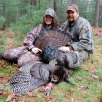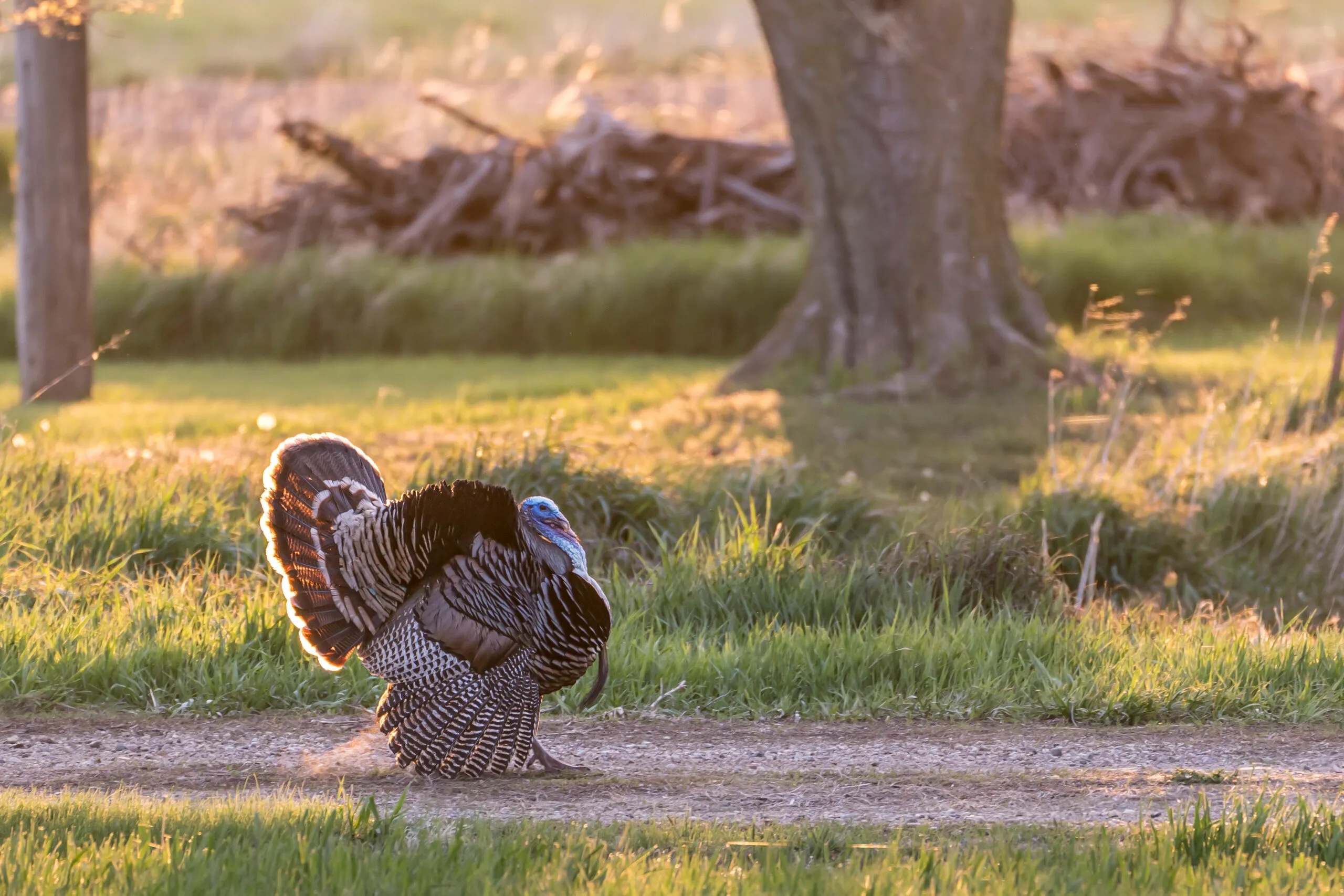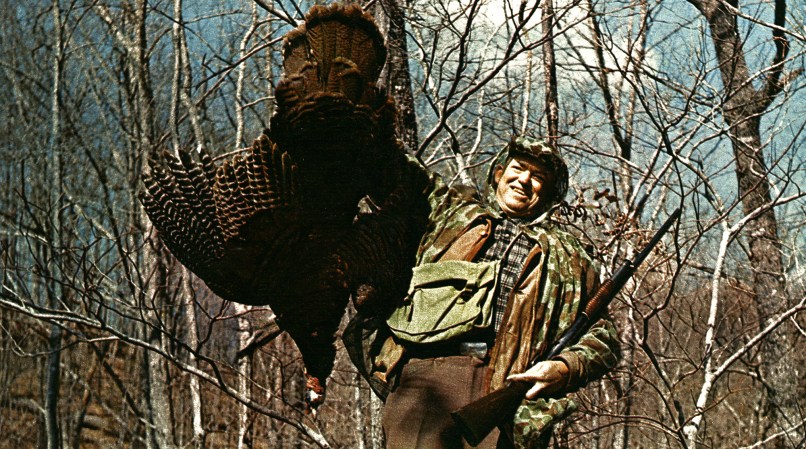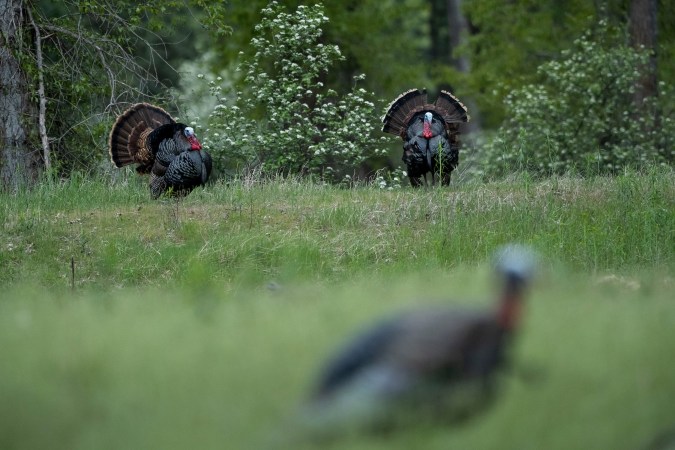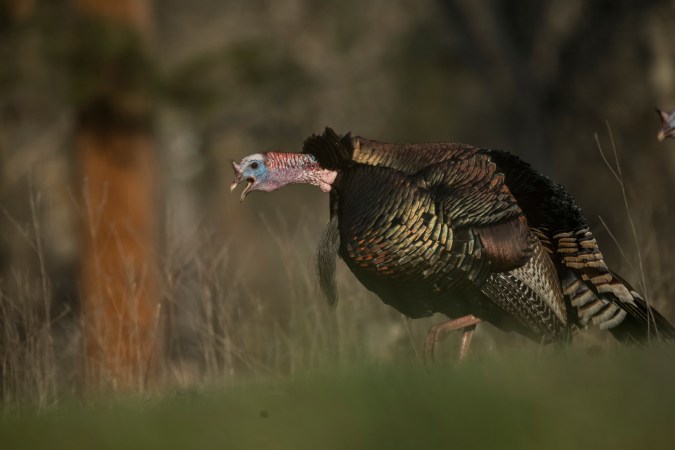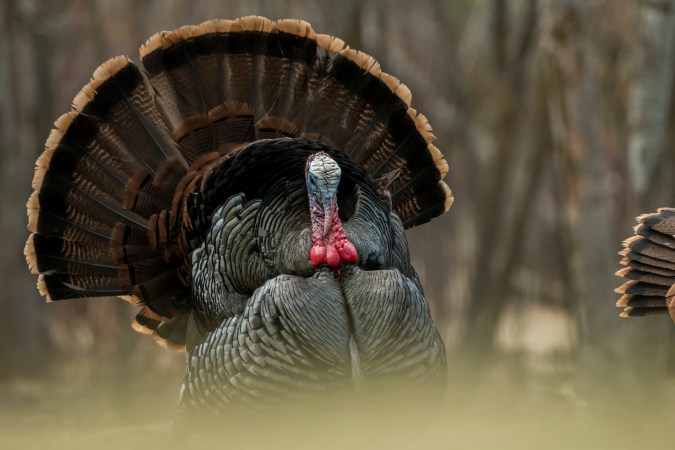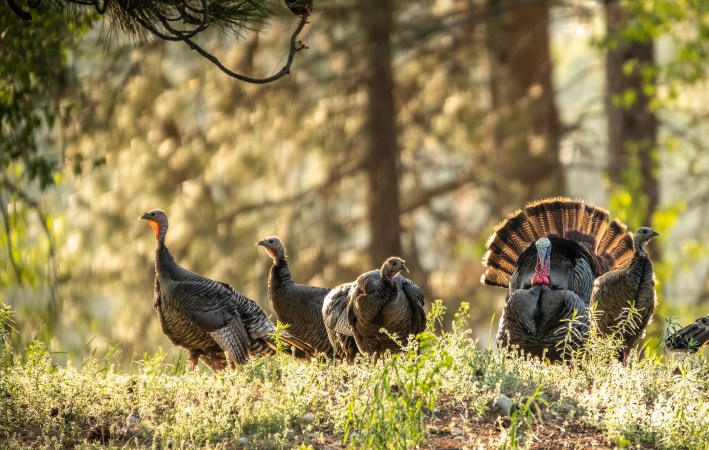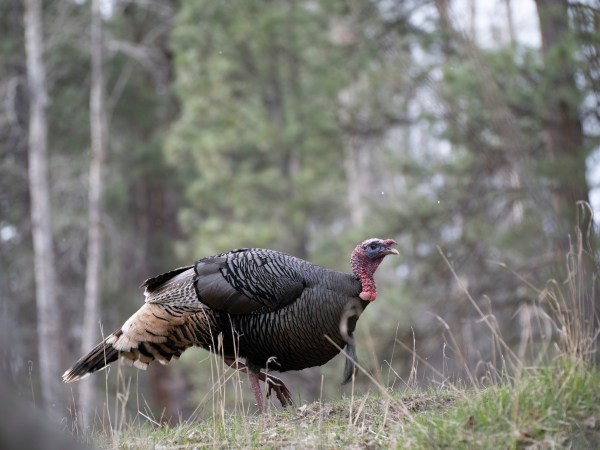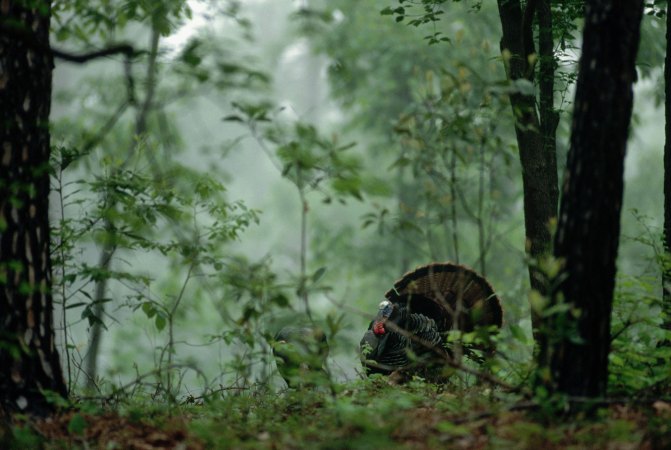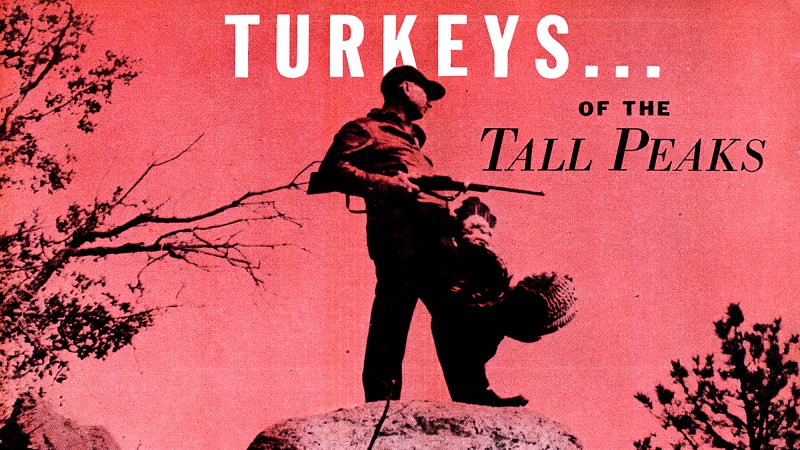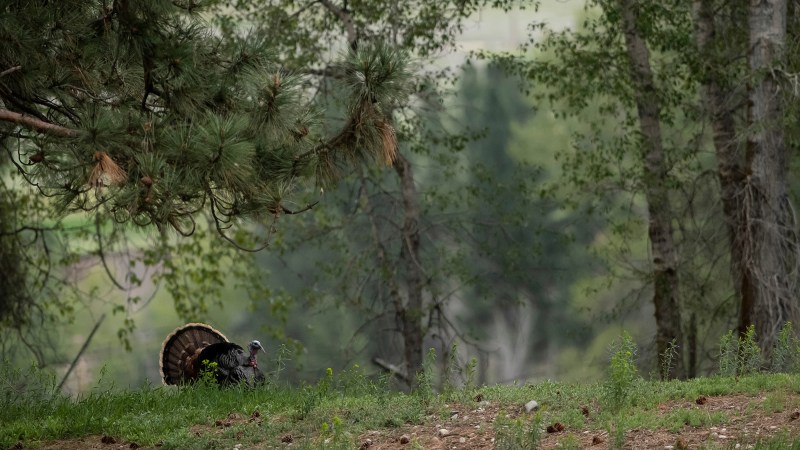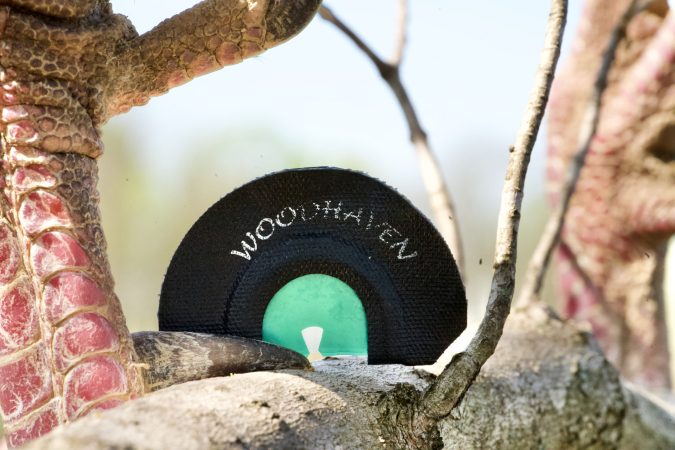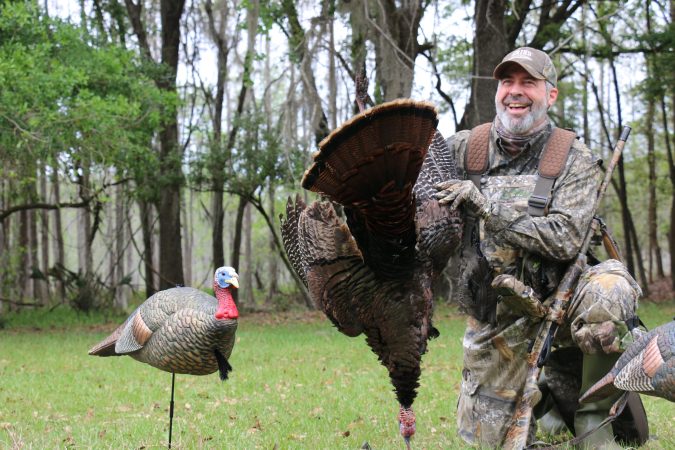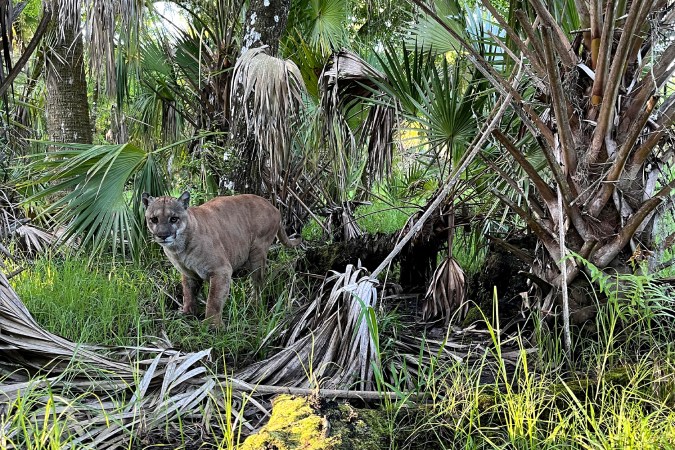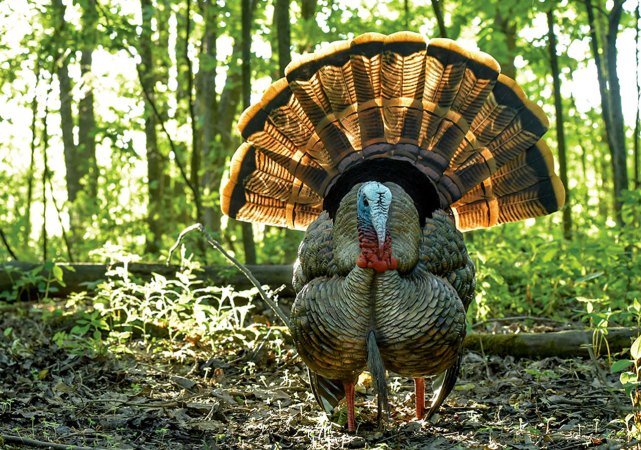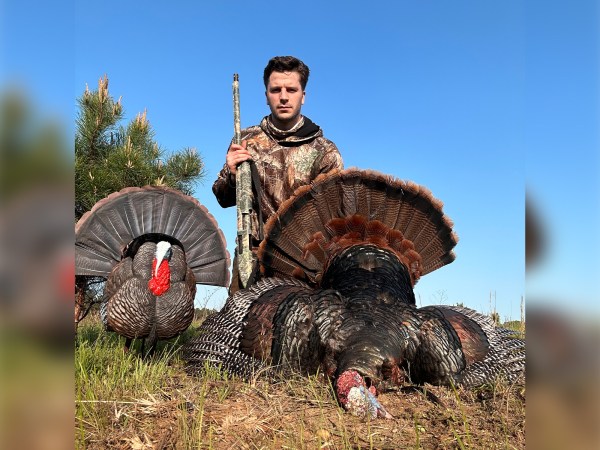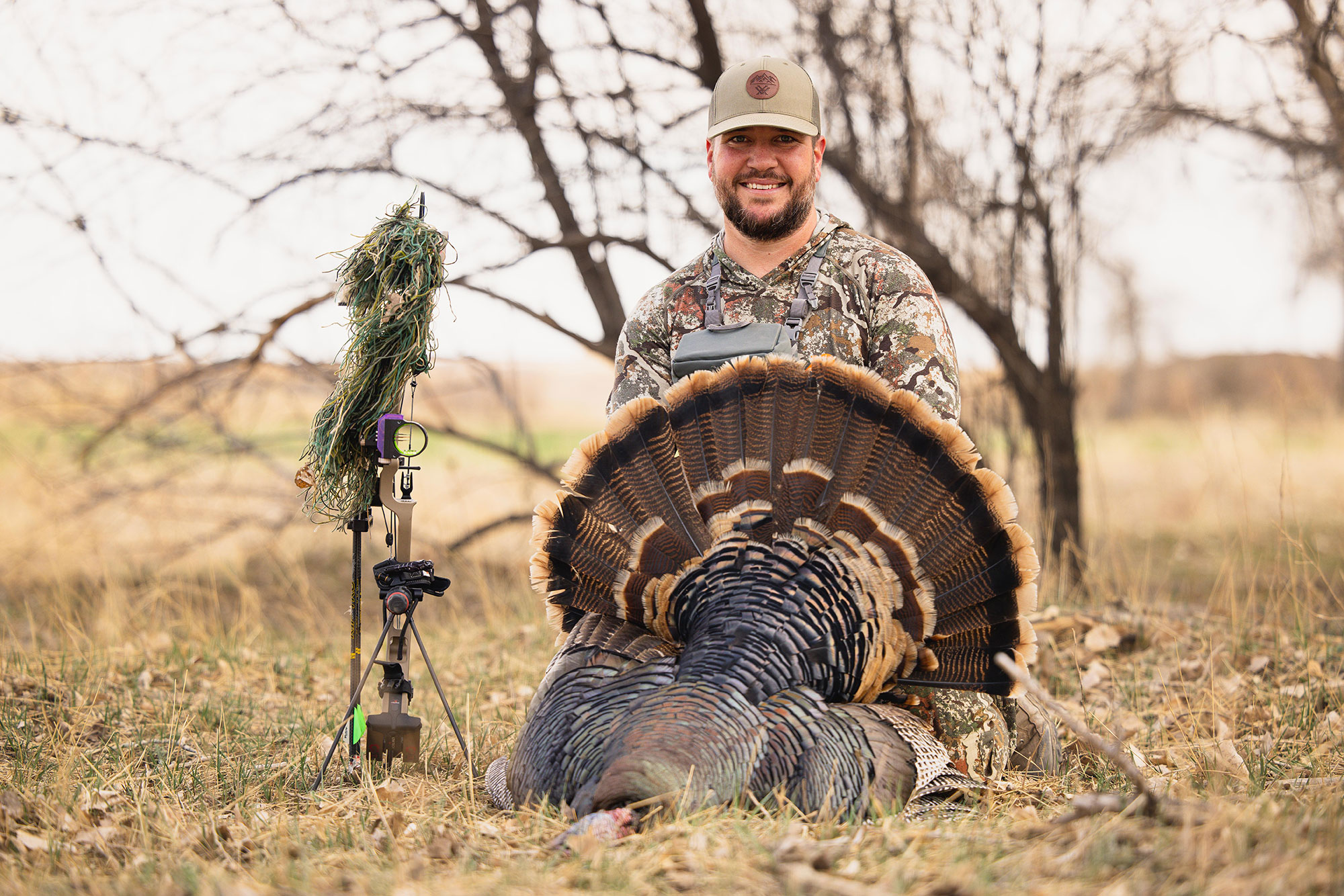By 1983, a new era in modern-day turkey hunting was taking hold. The National Wild Turkey Federation was hitting on all cylinders; successful wild turkey trap-and-transplant programs were exhibiting promising results, and many states that had too few wild turkeys to hunt were opening seasons. Outdoor Life’s own Charlie Elliot, The Old Professor, was still teaching the masses how to get their gobbler and Ben Rogers Lee was the acknowledged king of turkey calling.
Among hunters, especially those of us who had yet to shoot one (and there were many), wild turkeys were almost mystical creatures that could both see and hear better than any monster whitetail buck in the woods.
“If they had the ability to smell,” the saying went, “no one would ever shoot one.”
I was a 24-year-old associate editor at the time with a whole three months under my belt. I, too, revered the wild turkey. When editor-in-chief Clare Conley doled out February’s feature stories for editing he handed me two: “The Walleye Whiz” (I had never fished for walleyes in my life) and a tactical turkey hunting story by Larry Dablemont. His instructions were simple.
“The title of the turkey piece is ‘Spring Gobblers Are Dumb,’” he bellowed. “Don’t even think of changing it.”
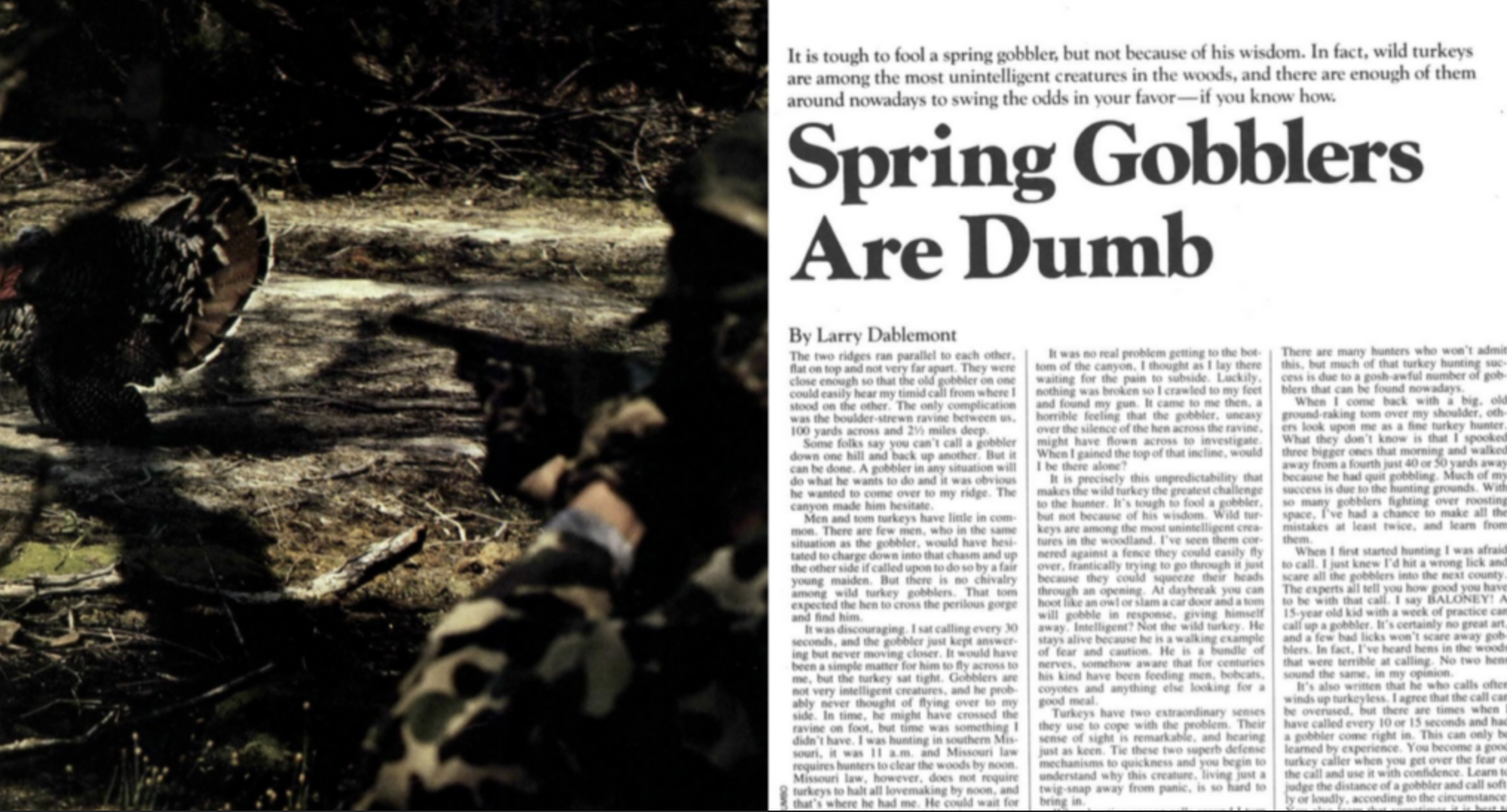
I recall taking pencil to paper (no computers back then, of course) as if it were the SATs. Of course, I didn’t change the title of the piece, though I didn’t agree with it and knew we would be barraged with disparaging letters once readers got their hands on the story. And we did — dozens of letters. Us editors bore the brunt of an offended readership which raked us through the coals for publishing such nonsense about what is unassailably our greatest game bird.
The story remains one of my all-time favorites, and the tactics stand the test of time. Even Charlie Elliot was even proud of it. Since the article was published, I’ve shot quite a few turkeys (caught a bunch of walleyes, too). I’ve also had plenty of run-ins with dumb turkeys over the years, but the Hellion of Hammertown Road was a gobbler like no other. We met in the ’80s, not long after Dablemont’s article had come out. Dablemont’s basic assertion was that turkeys aren’t so much smart or dumb, but rather spend their whole lives avoiding being eaten which has them on a hair trigger. He wasn’t wrong.
But “The Hellion,” as I came to call him that season, seemed just plain idiotic. Each night that my buddies and I roosted him, for example, he’d pitch from the roost in the dark to come find us — gobbling the entire way. He’d do the same thing, evening after evening no matter if we used loud locator calls or softer yelps. Then, morning after morning, we’d try to set up on him. And morning after morning, we would fail.
This was due in part to his eventual nighttime roost sites — directly over Hammertown Road — which made him nearly impervious to our multiple approaches. He had no hens, but would fly down and completely shut up.
When he gave up his roadway roost for one alongside a brook on the final morning of the season, I thought I had him. I was able to walk the brook in virtual silence and sneak to within 30 yards of his tree. I could see him strutting in the pre-dawn darkness on a big limb, and I’d be lying if I told you that I didn’t think about taking him right then and there.
But knowing that he deserved a fair-and-square shake, I sat there in silence until he pitched off the roost and walked out of my life for good.
So are turkeys smart or dumb? Or is it us hunters? It’s something I ponder each and every morning of the season. — Gerry Bethge
Spring Gobblers Are Dumb, February 1983
By Larry Dablemont
The two ridges ran parallel to each other, flat on top and not very far apart. They were close enough so that the old gobbler on one could easily hear my timid call from where I stood on the other. The only complication was the boulder-strewn ravine between us, 100 yards across and 21/2 miles deep.
Some folks say you can’t call a gobbler down one hill and back up another. But it can be done. A gobbler in any situation will do what he wants to do and it was obvious he wanted to come over to my ridge. The canyon made him hesitate.
Men and tom turkeys have little in common. There are few men, who in the same situation as the gobbler, would have hesitated to charge down into that chasm and up the other side if called upon to do so by a fair young maiden. But there is no chivalry among wild turkey gobblers. That tom expected the hen to cross the perilous gorge and find him.
It was discouraging. I sat calling every 30 seconds, and the gobbler just kept answering but never moving closer. It would have been a simple matter for him to fly across to me, but the turkey sat tight. Gobblers are not very intelligent creatures, and he probably never thought of flying over to my side. In time, he might have crossed the ravine on foot, but time was something I didn’t have. I was hunting in southern Missouri, it was 11 a.m. and Missouri law requires hunters to clear the woods by noon. Missouri law, however, does not require turkeys to halt all lovemaking by noon, and that’s where he had me. He could wait for hours. With that in mind I made my decision. I would move back up my ridge a few hundred yards, then, out of sight and hearing, slide and bounce to the bottom of the gulch. Then I’d climb carefully up the other side to the gobbler’s ridge where I would lay strategy for his ultimate trip to the check-station.
It was no real problem getting to the bottom of the canyon, I thought as I lay there waiting for the pain to subside. Luckily, nothing was broken so I crawled to my feet and found my gun. It came to me then, a horrible feeling that the gobbler, uneasy over the silence of the hen across the ravine, might have flown across to investigate. When I gained the top of that incline, would I be there alone?
Read Next: The Best Turkey Vests
It is precisely this unpredictability that makes the wild turkey the greatest challenge to the hunter. It’s tough to fool a gobbler, but not because of his wisdom. Wild turkeys are among the most unintelligent creatures in the woodland. I’ve seen them cornered against a fence they could easily fly over, frantically trying to go through it just because they could squeeze their heads through an opening. At daybreak you can hoot like an owl or slam a car door and a tom will gobble in response, giving himself away. Intelligent? Not the wild turkey. He stays alive because he is a walking example of fear and caution. He is a bundle of nerves, somehow aware that for centuries his kind have been feeding men, bobcats, coyotes and anything else looking for a good meal.
Turkeys have two extraordinary senses they use to cope with the problem. Their sense of sight is remarkable, and hearing just as keen. Tie these two superb defense mechanisms to quickness and you begin to understand why this creature, living just a twig-snap away from panic, is so hard to bring in.
When hunting season rolls around I tum all thoughts to gobblers, and I’ve had enough success chasing them to make me dismiss reports of crappies in swarming hordes spawning in three feet of water. The wild gobblers I have chased cause me to give little thought to the lunker bass looming in the warming waters of a nearby lake.
There are many hunters who won’t admit this, but much of that turkey hunting success is due to a gosh-awful number of gobblers that can be found nowadays.
When I come back with a big, old ground-raking tom over my shoulder, others look upon me as a fine turkey hunter. What they don’t know is that I spooked three bigger ones that morning and walked away from a fourth just 40 or 50 yards away because he had quit gobbling. Much of my success is due.to the hunting grounds. With so many gobblers fighting over roosting space, I’ve had a chance to make all the mistakes at least twice, and learn from them.
When I first started hunting I was afraid to call. I just knew I’d hit a wrong lick and scare all the gobblers into the next county. The experts all tell you how good you have to be with that call. I say BALONEY! A 15-year old kid with a week of practice can call up a gobbler. It’s certainly no great art, and a few bad licks won’t scare away gobblers. In fact, I’ve heard hens in the woods that were terrible at calling. No two hens sound the same, in my opinion.
It’s also written that he who calls often winds up turkeyless. I agree that the call can be overused, but there are times when I have called every 10 or 15 seconds and had a gobbler come right in. This can only be learned by experience. You become a good turkey caller when you get over the fear of the call and use it with confidence. Learn to judge the distance of a gobbler and call softly or loudly, according to the circumstance. You also learn that sometimes it is best to put down the call and wait.
But the biggest part of turkey hunting isn’t the calling. It isn’t even a close second. Patience, restraint and experience in the ways of the gobbler and his reactions to certain situations are crucial for success I’ve heard experts say what a gobbler will and will not do in certain situations but I’m convinced no one can accurately predict his actions. There are no old toms so wise they can’t be called. The stories are colorful but untrue. I know that on any given day, the best of hunters fail. It follows, too, that on any given day a beginning hunter may call up an old tom that has refused to move for a week. It just happens that way. No one knows why.
Some biologists claim that yearling toms, or jakes, won’t gobble. Experienced hunters know better. I once called up a jake that strutted and gobbled a dozen times or more. I have also watched half-grown wild turkeys, still in a brood, gobble in October. If you can tell the difference between· a jake or a long-bearded old tom by listening to the gobble, you have some set of ears. When I hear that claim, I look upon the hunter with a great deal of suspicion.
Time spent in the woods is the best teacher. In 10 years of turkey hunting I have, at one time or another, seen all the old laws broken. “The gobblers won’t gobble if it’s cold,” they say. Several years ago a friend of mine in Arkansas called up and killed a tom that gobbled repeatedly in 35° weather, with three inches of snow on the ground.
The formula for success is simple: You learn about gobblers by hunting them, and from the heart-pounding anticipation that usually ends in disappointment as you learn.
During the 1975-76 turkey season, we got up one morning to scrape a thick frost off the windshield of the old pickup. It was 29° at dawn, and not much warmer at 10:30 when I killed a 20-pound gobbler sporting a nine-inch beard. He had gobbled as though it were 60°, as did half a dozen others that morning. There are hunters who kill turkeys in steady rain and those who stalk the woods on beautiful days when all is quiet. Who can explain it?
I first learned to use the call in the early ’70s but was terribly afraid I’d use it wrong in the clutch. An experienced hunter who was with me one morning advised patience. They weren’t gobbling, but the woods were full of turkeys. I sat down and began to call sparingly. After 20 minutes of silence, I decided to get up and search for a better place. I don’t know why beginners do such things but when I stood up, heavy wingbeats brought my attention to a pair of turkeys approaching from the rear. The birds were almost in range and taught me quite a lesson, or so I thought. Later that day I did the same thing. I now realize that toms don’t always gobble on their way to a call. If you can’t sit patiently for a couple of hours in such a situation, you might as well stay on your feet because it sometimes takes a while for a gobbler to come to you.
Read Next: The Best Turkey Calls, Tested and Reviewed
Some inexperienced hunters think they have lost their turkey just because he quit gobbling. I remember well a tom turkey that gobbled for an hour in answer to my call without coming closer than 150 yards. Suddenly, he shut up for 20 minutes. I nearly got up and left, but the experience gained from past failures told me to stay put despite the discomfort. When the turkey broke the silence with his final gobble he was only 40 yards away. I never saw him move in through the underbrush.
The formula for success is simple: You learn about gobblers by hunting them, and from the heart-pounding anticipation that usually ends in disappointment as you learn.
Some hunters are obsessed with killing a wild gobbler. A few I know boast of a dozen long-range shots each year. Most have no patience or confidence so they attempt to kill turkeys at 100 yards. They bag a few birds, but most are never recovered! Other hunters sneak in before first light and kill toms off the roost. These people miss everything that makes turkey hunting worthwhile.
I’ll keep hunting them as it has been done traditionally. No other way can offer the same excitement and satisfaction. Hunting must be more than just bringing home a turkey. Every trip is an entirely new and different experience and you’ll find that gobblers follow no rules. Such was the case on the morning when events brought me to the edge of that canyon.
At daybreak I had heard four or five different gobblers. I sat in on the closest one but noticed 30 minutes later that there wasn’t a sound anywhere. Why do gobblers shut up so soon? Events had transpired similarly for several days, leading me to believe that there was a great deal of mating going on. When hens are on the nest, gobblers are more responsive and hunting is often best. When half a dozen hens run to the nearest gobbler after flying down from the roost, it is somewhat difficult to call that gobbler to you. By 8 a.m. I suppose a tom turkey just isn’t interested in another hen.
Although most hunters leave the woods two hours after the gobbling stops, I decided to stay that morning. I sat listening to the silence until 9:30. As the sun grew wanner and the leaves softer, I fell asleep. It was 10:30 when the gobbling from across the ridge woke me. I guessed that after the early mating activity the gobblers and hens separated. As the morning turned to midday the toms sought out hens. The gobbler across the gorge from me had probably mated with one or more hens after flying off the roost. Then he may have fed for a while as the hens became more interested in adding eggs to the nest. Late in the morning he became lonely and began to gobble in response to my call. After all, a hen with a sorry voice is better than no hen at all.
Twenty or 30 minutes later, I found myself climbing the opposite ridge on all fours, scratched, bruised, scraped and fairly confident I was on a wild turkey chase.
As I topped the ridge about 200 yards from the gobbler, I rose to my weakened knees, blew the dirt out of my gun barrel and reloaded. I reached for the cedar box and gave forth my most seductive call. The gobbler answered immediately and was exactly where he had been for the past 30 minutes. My knees grew stronger as I headed toward the tom. I moved about 50 yards and called again.
The gobbler answered, and the leaves and buds shook. He had moved closer, too. We were less than 75 yards apart, with a thick grove of five-foot pines separating us.
Realizing there was no time to hide, I just sat down inside the thicket of pines. As the gobbler continued to sound off, I called once more, very softly, and he really began to sound off. I put down the call, brought my gun up and braced my elbows against my knees to keep the barrel from shaking. The woods grew silent as I peered into the open area where I knew he would appear. Suddenly I heard a deep, vibrating, booming sound, so close it seemed as if the strutting tom was right beside me. Instead of moving into the open, he had moved right around the edge of the pine grove. When I spotted him he was in full strut, just 10 yards away.
Read Next: The Best Turkey Hunting Shotguns, Tested and Reviewed
The turkey strutted slowly past me. His booming seemed to shake the ground. For some reason he never saw me, but I saw that long beard and the big fully spread tail. The sun caught the feathers perfectly, giving off more color than ever imaginable. I waited until he stopped strutting. As he turned 35 yards away, head erect, wondering where that hen with the strange voice had gone, I steadied the shaking barrel and squeezed the trigger. He was not only the most responsive gobbler I’ve ever taken but the biggest. The turkey wore an 11-inch beard and weighed 24 pounds.
Mid-April will bring another hunt, different circumstances and most likely different results. But I doubt anything could ever equal that hunt: hearing the gobbler strutting and booming only a few feet away, then watching him move past so close it seemed I could reach out and touch him. Perhaps the gobbler’s descendants on that ridge or atop the other hold more exciting experiences this spring.
